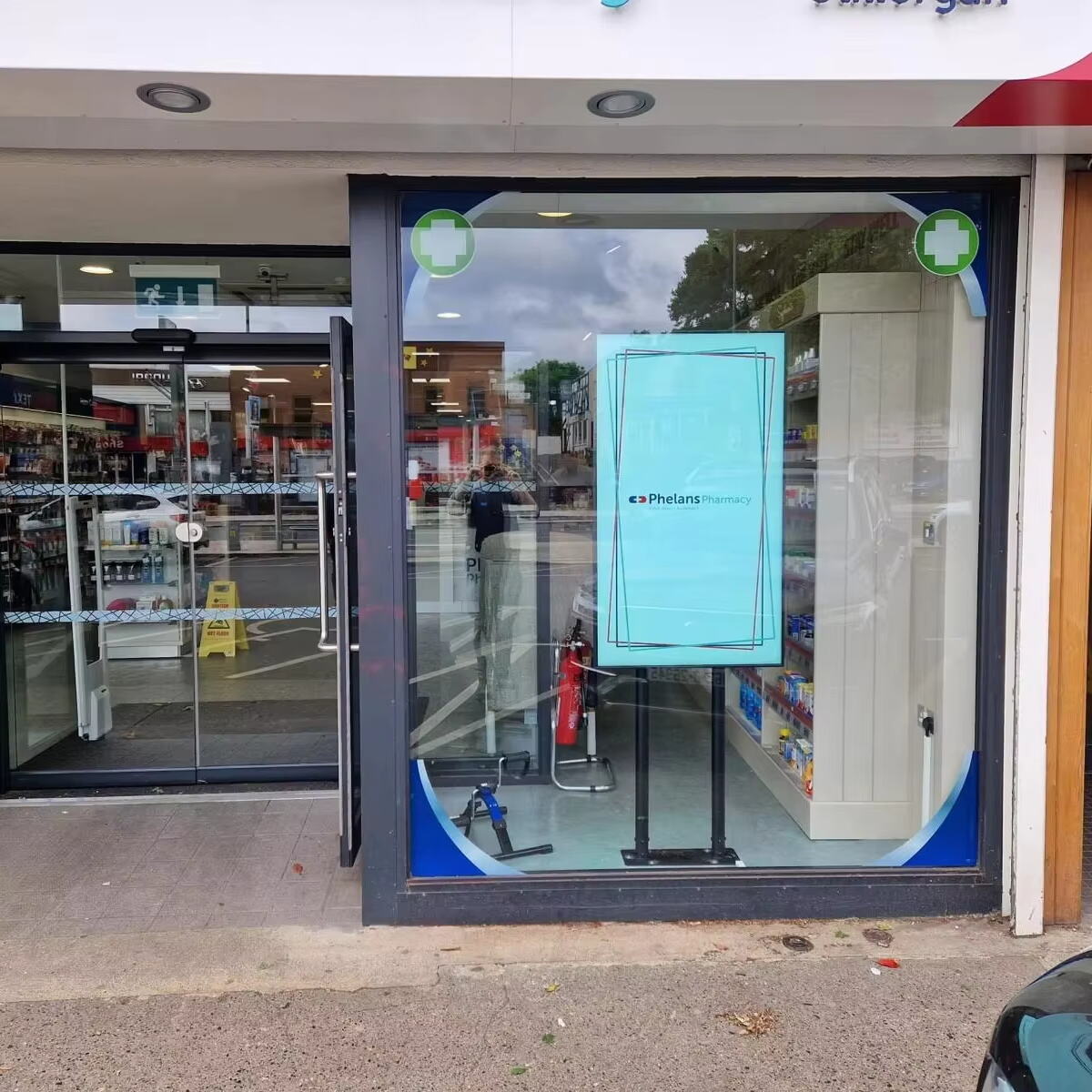
Quick‑service restaurants thrive on speed, convenience, and memorable experiences. Integrating Digital Menu Boards transforms traditional static displays into vibrant, dynamic canvases that engage patrons from the moment they enter. By leveraging high‑resolution imagery, animated transitions, and real‑time updates, restaurants reinforce brand messaging and showcase fresh offerings with greater impact. As customers scan the scene, Digital Menu Boards draw the eye to featured items, promotions, and combo deals—creating an immersive environment that elevates the QSR experience.
Digital Menu Boards simplify the process of updating menu items, prices, and promotions. Managers can push changes to multiple screens across one outlet or an entire franchise network with a few clicks. This agility eliminates the delays and costs associated with printing new boards or manually swapping signage. Real‑time synchronization ensures that every screen displays accurate information, helping staff avoid customer confusion and order errors that can slow service down.
Maintaining consistency across multiple locations is effortless when Digital Menu Boards are managed centrally. Cloud‑based platforms allow marketing teams to schedule content rotations, seasonal themes, and time‑sensitive offers from a unified dashboard. Whether rolling out a national promotion or tailoring messages for regional tastes, centralized control ensures that each screen reflects the correct campaign at the right moment—enhancing brand cohesion and reducing administrative workload.
Waiting in line can feel tedious, but Digital Menu Boards accelerate decision making by presenting clear visuals and concise information. High‑contrast imagery and well‑structured layouts guide customers through menu categories, specials, and add‑ons without overwhelming them. Animated call‑outs highlight best‑selling items or limited‑time offers, prompting quicker selections. When patrons can decide before they reach the register, order accuracy improves and throughput increases.
Digital Menu Boards equipped with touchscreen capability or integrated with self‑service kiosks invite customers to explore customization options. Patrons can swipe through ingredient lists, view nutritional facts, and build their meal exactly how they like it. This interactive engagement not only enhances satisfaction but also gathers valuable preference data. Armed with insights on popular modifications and dietary trends, restaurants can refine their offerings to better meet customer needs.
Promotions drive incremental sales, but timing is critical. With Digital Menu Boards, QSRs can launch flash deals, happy hour specials, or weather‑driven offers instantly. Imagine pushing a mobile‑order discount when rain begins, or featuring iced beverages on a hot afternoon—all without dispatching print materials. This real‑time flexibility keeps the menu relevant and encourages repeat visits as customers learn to expect fresh surprises on every visit.
Why limit menus to text and still images? Digital Menu Boards support video loops, animated GIFs, and even live social media feeds. Short clips of burgers sizzling on the grill or smoothies being poured convey sensory appeal that static boards cannot match. By weaving in user‑generated photos or hashtag streams, restaurants foster community engagement and leverage authentic content to build trust. Rich media formats make each Digital Menu Board a dynamic storytelling platform.

Behind every screen interaction lies a trove of data. Modern Digital Menu Boards track metrics such as dwell times, item views, and interaction rates on interactive elements. By analyzing which promotions capture the most attention, managers can optimize content placement and creative treatments. These insights reveal patterns in customer behavior—enabling restaurants to fine‑tune menu design, spotlight high‑margin items, and phase out underperformers.
Effective menu design often comes down to subtle layout differences. Digital Menu Boards facilitate A/B testing by distributing two variants of a menu to different screen groups or time slots. Comparing performance metrics—such as order volume and upsell rates—pinpoints which design drives the best results. This iterative approach ensures that the final Digital Menu Boards configuration delivers maximum impact and return on investment.
Traditional menu changes incur recurring costs: graphic design, printing, lamination, shipping, and installation labor. Digital Menu Boards replace all these expenses with a single hardware investment and software subscription. Content updates occur remotely, freeing staff to focus on customer service rather than manual sign swaps. Over time, the savings on print production and maintenance offset the initial outlay, delivering a strong return on investment for QSR operators.
Digital Menu Boards enable dynamic pricing strategies that can boost revenue. Restaurants can adjust pricing for peak hours, upsell premium items, or bundle combos with value‑added offers, all in real time. Deploying targeted promotions, such as breakfast combos early in the day and dessert specials after lunch, ensures that each screen plays an active role in revenue generation. By tracking sales lifts tied to specific campaigns, operators can measure ROI precisely and reinvest in high‑performing content.
In an industry reliant on disposable print materials, switching to Digital Menu Boards cuts paper use dramatically. QSRs can eliminate printed menu boards, flyers, and posters—reducing waste and carbon footprint. Energy‑efficient display technologies, such as LED backlighting and auto‑dim sensors, further minimize power consumption. Emphasizing this eco‑friendly approach in corporate messaging resonates with environmentally conscious consumers and aligns with broader brand responsibility goals.
Digital Menu Boards offer an ideal platform for showcasing sustainability commitments and sourcing stories. Restaurants can highlight local produce partnerships, fair‑trade ingredients, or animal welfare practices through short videos or rotating slides. This transparent communication builds trust and differentiates the brand in a market where customers increasingly value ethical considerations. By weaving these narratives into the Digital Menu Boards content, QSRs reinforce their values at the point of decision.
Expanding a QSR concept often involves opening dozens of outlets in rapid succession. Digital Menu Boards simplify scaling by allowing new units to be added to the network with minimal setup. Hardware arrives pre‑configured, and managers assign display groups to the corporate content schedule. New restaurants instantly receive the same high‑quality menu assets as flagship locations, ensuring consistent brand presentation from day one.
While consistency is key, local relevance drives engagement. Digital Menu Boards support regional menu variations, language options, and cultural promotions. A coastal location might feature seafood specials in addition to core offerings, while urban sites highlight delivery or mobile order prompts. By segmenting screens into localized groups, QSRs deliver tailored content that resonates with each community—without sacrificing centralized control.
Digital Menu Boards can be programmed to suggest complementary items automatically. After a customer selects a burger, the screen might animate a side of fries or a beverage pairing. These contextual suggestions function like a digital server, guiding patrons toward upsells and cross‑sells in a non‑intrusive way. Automated triggers based on time of day—such as coffee and pastry combos in the morning—ensure that every screen supports incremental revenue objectives.
Creating urgency boosts demand, especially in QSR environments. Digital Menu Boards excel at promoting limited‑time offerings with auto‑expiring visuals and countdown timers. Patrons see a bold “Only available today” banner or a ticking clock next to a seasonal shake. This sense of scarcity drives impulse buys and encourages customers to return before the promotion ends—fostering loyalty and repeat business.
Consistency between digital platforms and physical locations enhances customer trust. Digital Menu Boards integrate with mobile apps, websites, and delivery platforms to ensure that pricing, item availability, and nutrition information remain aligned. Changes made in one system reflect across all touchpoints in real time. This synchronization reduces friction, minimizes order errors, and delivers a seamless omnichannel experience.
Digital Menu Boards can display personalized content for loyalty members when they scan a QR code or tap a phone at the screen. Exclusive offers, points balance, or birthday specials appear directly on the board—encouraging redemption and driving repeat visits. By integrating loyalty data with the Digital Menu Boards platform, QSRs strengthen customer relationships and unlock deeper insights into purchasing habits.
Artificial intelligence is reshaping how customers interact with digital signage. Advanced Digital Menu Boards platforms analyze daily traffic patterns, weather forecasts, and historical sales to automatically optimize content. On rainy days, hot beverages take center stage; during lunch rushes, combo meals get priority placement. AI algorithms learn from performance data, continuously refining content strategies to match customer preferences and maximize engagement.
The next frontier of in‑store interaction involves touchless interfaces. Digital Menu Boards equipped with voice recognition or gesture controls offer hygienic ordering options—especially important in post‑pandemic environments. Customers can say menu categories aloud or wave to scroll through selections, reducing physical contact and enhancing accessibility. These innovative interfaces position QSRs at the cutting edge of customer convenience.
Most Digital Menu Boards platforms offer API connectors that sync menu data, prices, and inventory levels with point‑of‑sale software. This integration ensures that content updates and order fulfillments remain accurate in real time.
Routine maintenance includes cleaning the screen surfaces, updating firmware, and monitoring network connectivity. Many vendors provide remote diagnostics and alert notifications to minimize downtime and service calls.
Software subscriptions for content management, analytics, and remote monitoring may incur annual or monthly fees. However, these costs are often offset by savings on print materials, labor, and improved revenue from dynamic promotions.
Utilize built‑in analytics to track impressions, dwell times, and click‑through rates on interactive elements. Correlate these metrics with sales data and customer feedback to calculate ROI and optimize future campaigns.

Copyright © 2025 Shenzhen YJCen Technology CO.,Ltd. All rights reserved. - Privacy policy